Snow painting wasn’t in my plan for today. Fortunately, the weather gods intervened overnight, and I woke to stunning views. As daylight arrived I grabbed my camera, conscious that rain would soon disperse with the visual feast awaiting me.
I live in a rural location, and at this time of year the trees cast beautiful silhouettes against the often grey skies. I’ve developed a fondness for the clarity of light a winter sky can bring.
Today, it seems that a greater power might be guiding me; last week I joined the Woodland Trust and my membership pack arrived yesterday. While looking through the viewfinder of my camera at daybreak, I could instantly see the shapes of the trees highlighted beautifully against the snowy landscape. Not only did this give me some wonderful photos, but also the inspiration to create some art!
So, with my trusted identification chart of British trees to aid me, I’m embarking on a series of tree paintings. Yes, I often paint the sea and landscapes, but how can I not embrace the season?
Snow Painting Inspiration
How to do you paint white in watercolour? The answer is… carefully!
If you look closely at a snowy scene, you’ll see there are countless shades of white, so it isn’t quite as simple as leaving the paper white. You also need to add subtle hints of colour.
For the purpose of this article, I’m going to share a few ideas but I will follow up with more tutorials that will also become part of my landscape painting ideas courses and book. Work in progress, as they say.
Now, when I came back to art after many years in the corporate world I threw myself into learning. Yes, I’ve put the hours in, but I also want to share the people who I’ve learned from. Geoff Kersey is a master of landscapes in watercolour and his book Trees and Woodlands in Watercolour is fabulous. He is also great at winter landscapes, so for the purpose of learning about today’s subject matter, I think he’s perfect for me to recommend.
Snowy Landscape Photos
As a creative, I get distracted easily. Nature is one such distraction, and because of the speed at which a moment passes, even a sketch is sometimes to slow. Enter photography.
Recently, I bought a camera, and I think it’s one of the best investments I’ve made in quite some time. I visited a local camera shop with no pushy salesperson, got some good advice and was able to feel the weight of each camera as well as the size in my hands. Then I saved for a few weeks before buying the model I wanted (more on that another day).
This morning was the first chance I’ve had to use it properly, so I’d love to share the results.

This photo is definitely going to inspire a few snow paintings. As well as the clear trees that I can zoom in on, I also have the haunting mist and distant trees on the horizon.
It was worth getting cold toes!
I took around 50 photos today, and have yet to edit them. The ability to create artworks that use them for inspiration will last me a lifetime, though. Here are some more.
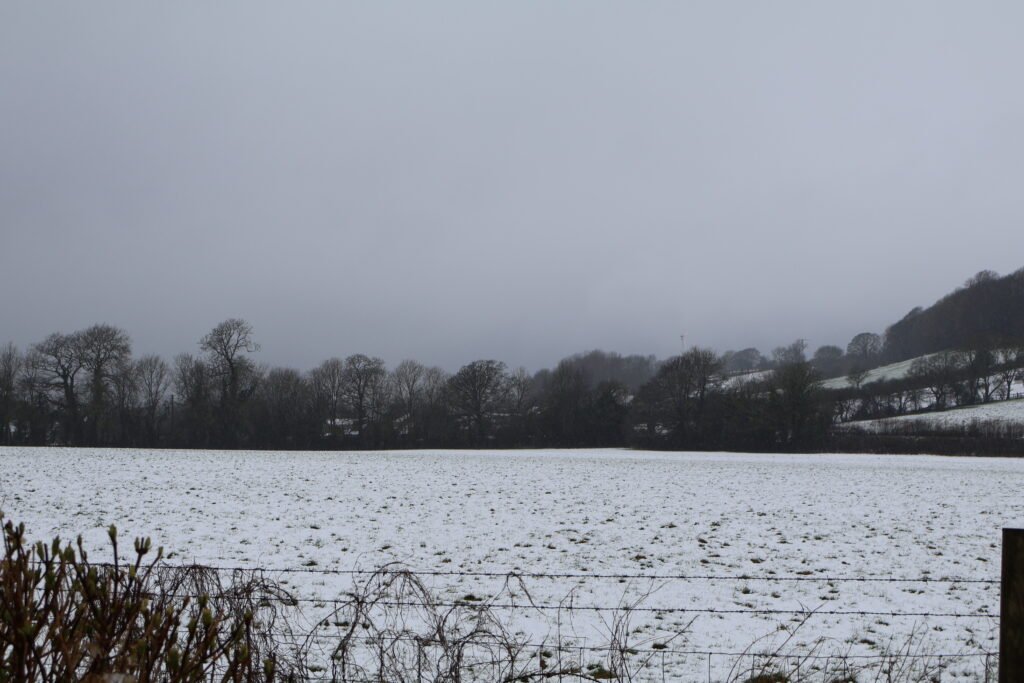
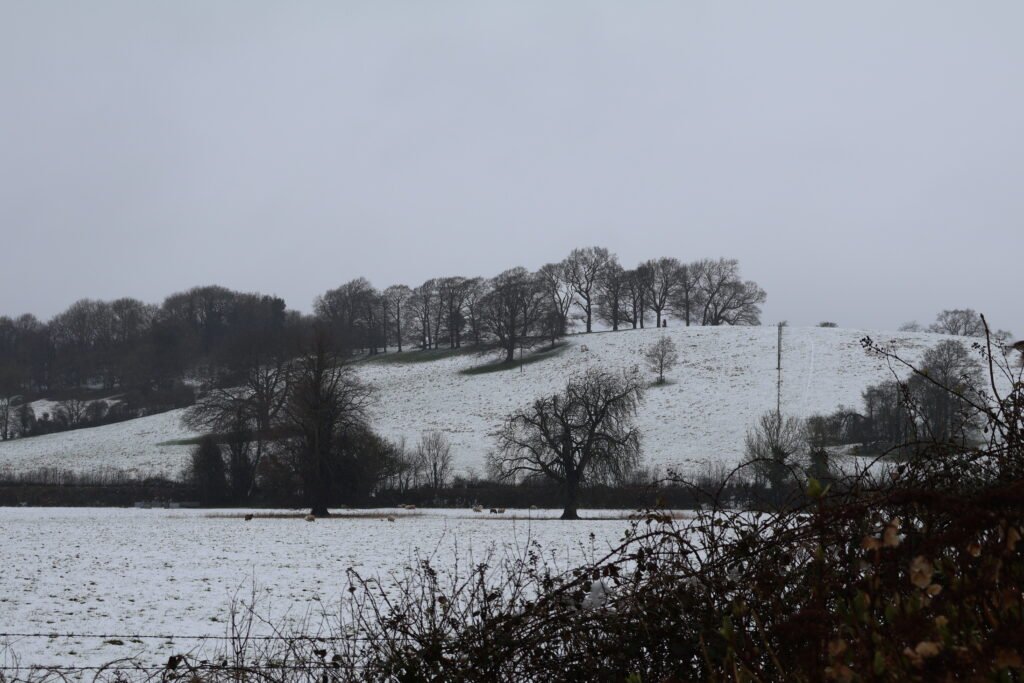

Snow Painting in Watercolour – Step by Step
Right. On with the example. I will keep things simple for the purpose of today, but will create a more detailed PDF that you’ll be able to download. I will also include my sketch in that package so that you can use it for ease of reference.
In the first stage of my paintings, I often use wax resist and masking fluid – sometimes alone, sometimes both!
Today, it’s a mixture. This painting style is not photo-realistic, I purposely use random dots and squiggles to create interesting and unexpected outcomes… it’s one of the joys of watercolour.
Then it’s a waiting game.
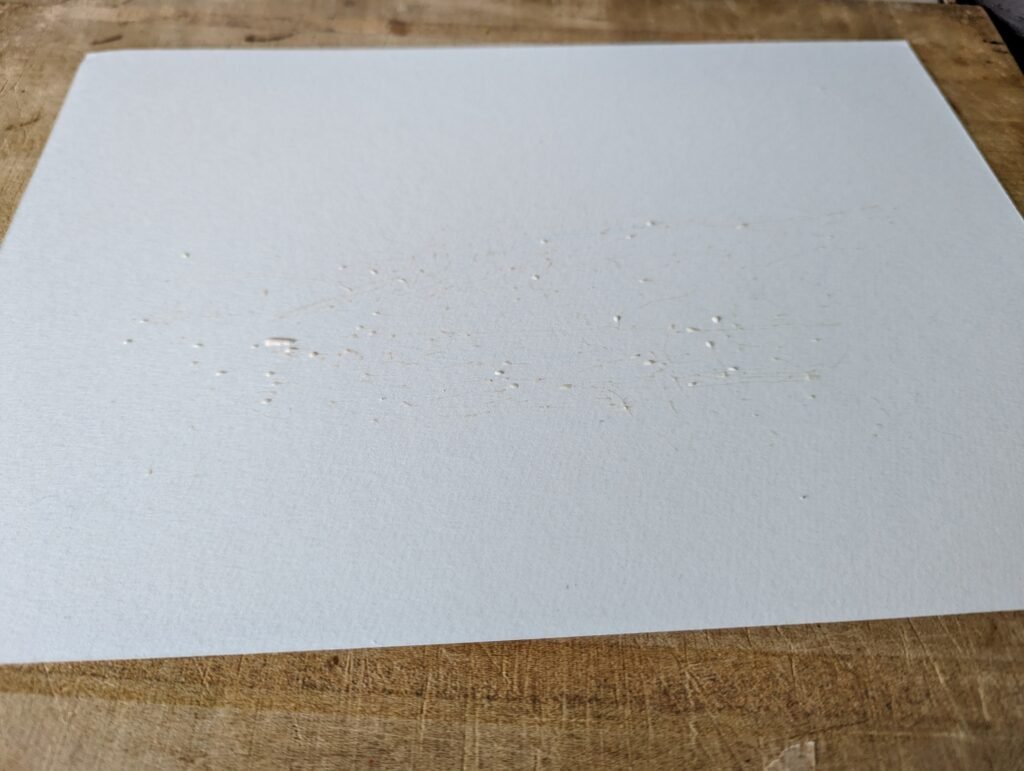
Once the masking fluid is dry, I add my first washes. Today, my photos are almost black and white, so I’ll be aiming for contrast and using negative space to keep it clean.
In case you’re wondering, I’m painting with my Daler Rowney Aquafine paints. I bought these a couple of weeks ago and I love them!
How to Paint Distant Trees in Watercolour
One of the key skills in watercolour painting is understanding the medium. For this painting, I want to capture the trees that are shrouded in mist, so to keep that nice and blurry I make sure there’s plenty of water on the surface above the horizon. I’m essentially going to use the same mix of paint throughout the painting, but in different dilutions.
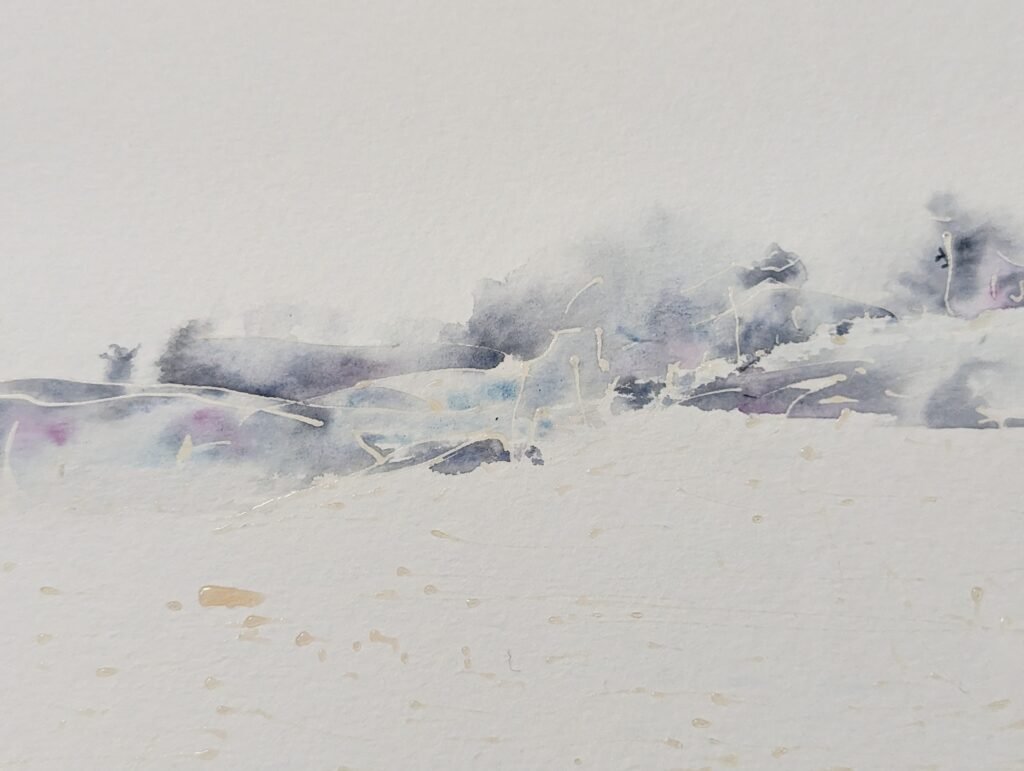
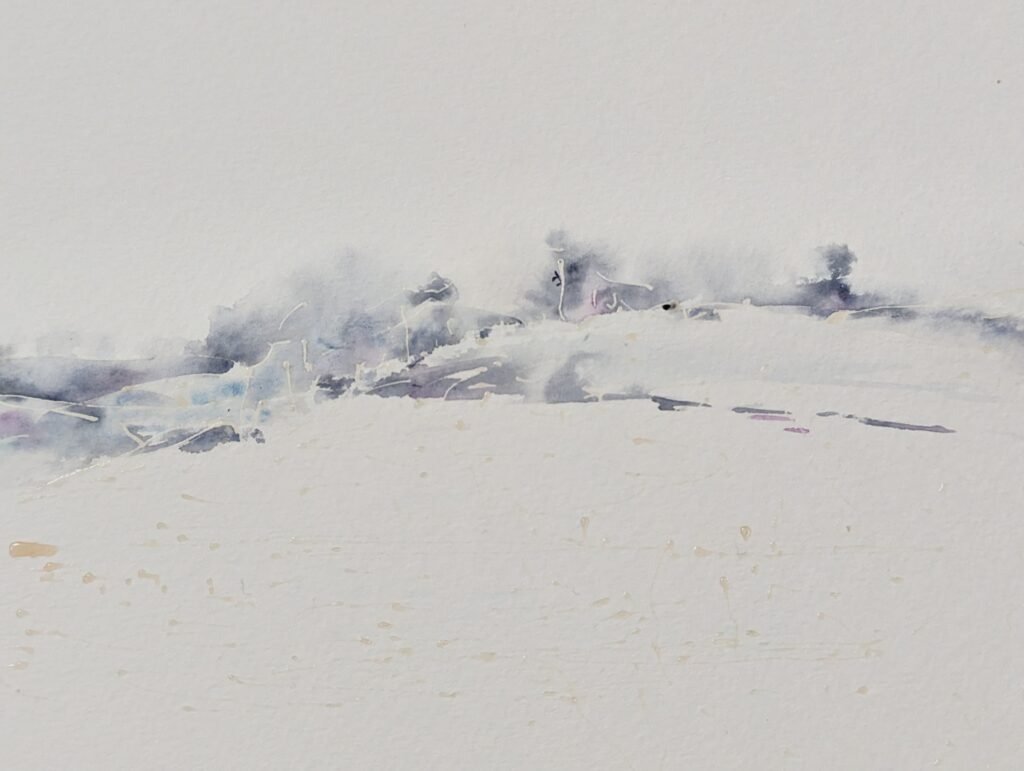
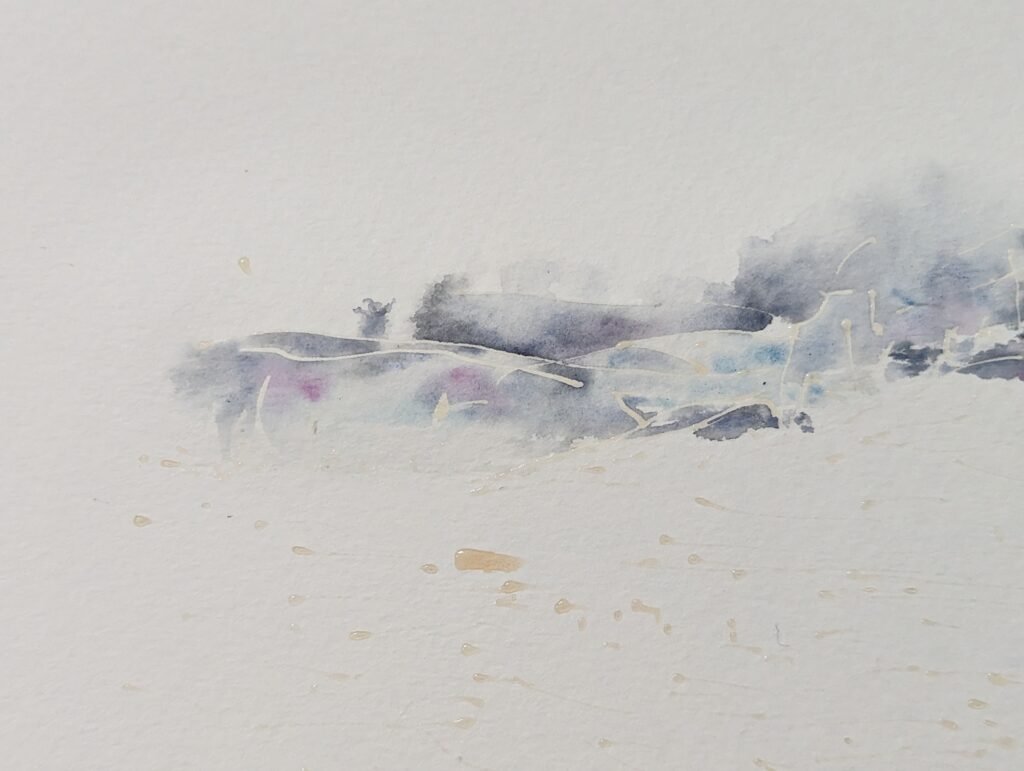
Next I look for areas of shadow that I can cover with a thin wash. This will mean that once I remove the masking fluid I have tones to work into. It’s at this point that I’ll leave everything to settle for a bit, make a cup of tea, and ponder what to do next.
How to Add Contrast When Painting Snow
This is where the brushes change. I love painting miniatures so have tiny brushes to use for the job, but on a painting like this one (A4 size) I’ll work down gradually. To start with I suggest the trees with my rigger brush, then I move down to my 0000 round for the final touches.
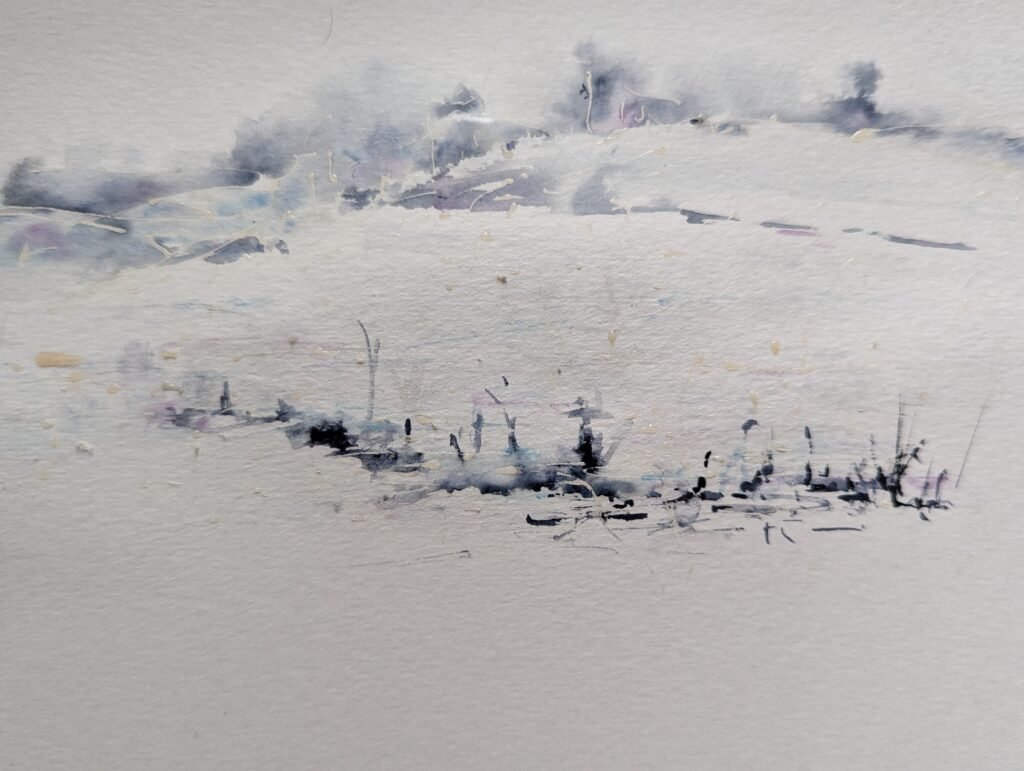
Learning to Paint Snow with Me
I’m sharing photos here, and I do realise that it’s not as simple as a video, but the point is that I will be making a video and PDF to accompany this blog post. At that point you’ll have everything you need broken down step-by-step.
The final painting is a simple but effective capture of my morning jaunt outside, and I’m so pleased I made the effort. Within hours, the snow had melted, but I did take more photos as that happened. I’m hoping that those will enable me to demonstrate perspective which will come in a later post.
I’m keeping the final reveal for a couple of days because I like to ponder and return to my artwork for any last minute tweaks.
I’d love you to sign up for my newsletter. Not only will you get to travel with me, you’ll also learn to paint. There are also writing workshops coming later this year.
I’ll leave it there, but please get in touch if you have any questions even if they are unrelated to my snow painting!
